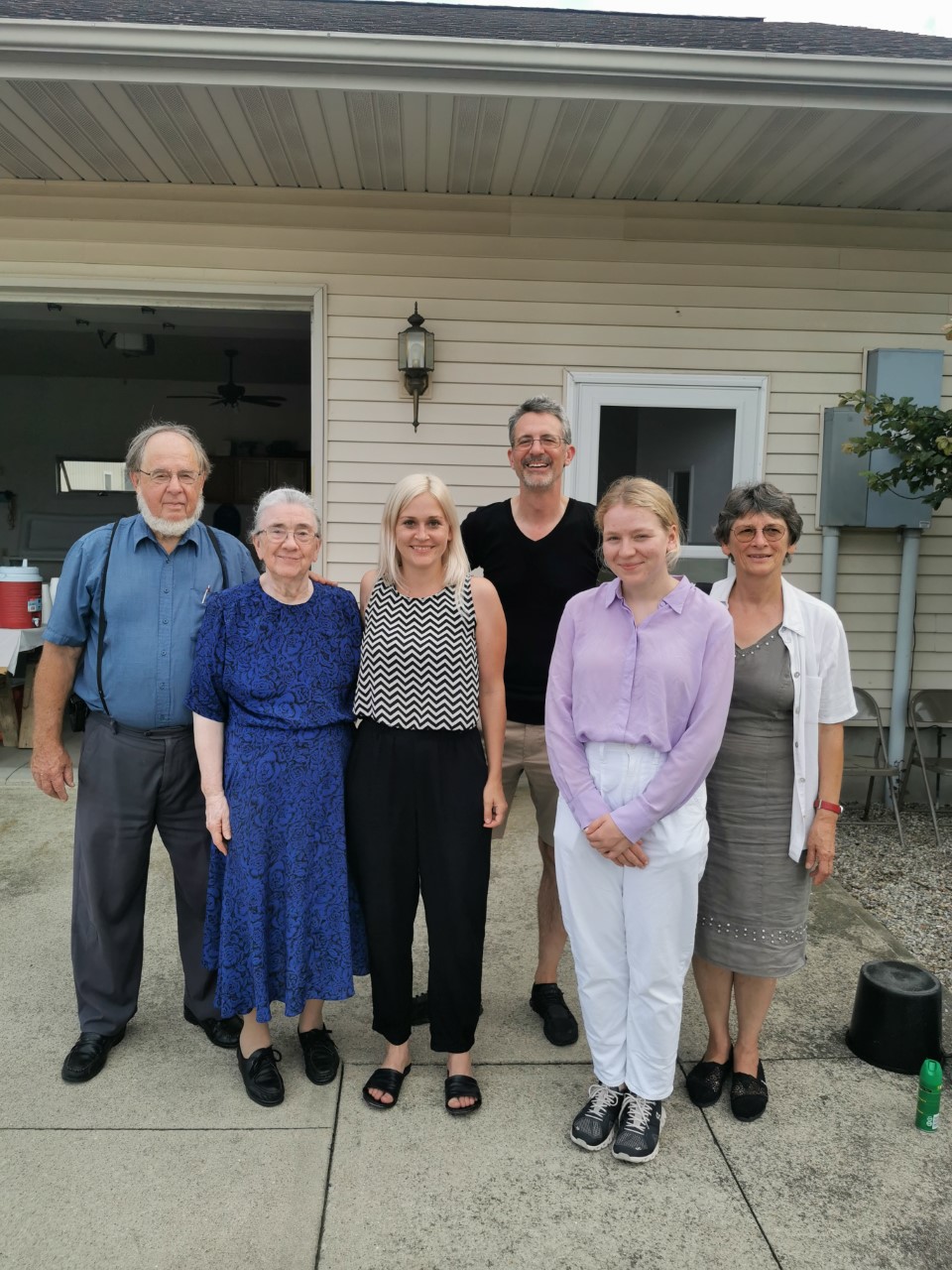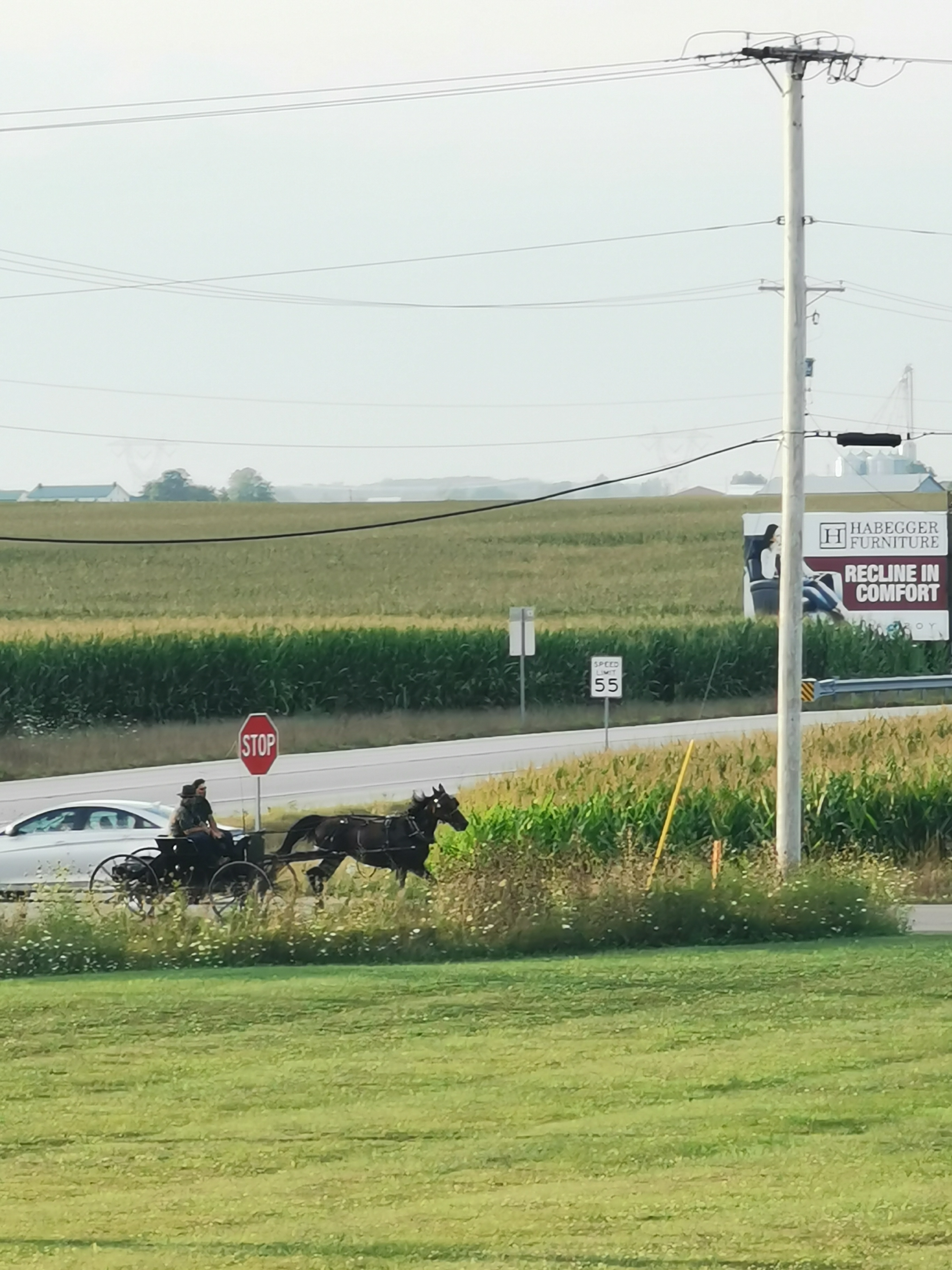Fieldwork
First fieldwork
Due to travel restrictions we couldn't conduct any fieldwork during the first one and a half year of the project. Thanks to a National Interest Exception granted by the US embassy we finally could travel to the US in summer 2021. Travelling with Guido Seiler and Anja Hasse were also Elvira Glaser and Coralie Aschwanden. We had nearly two weeks to collect data of Amish and ex-Amish speakers in Adams County, IN, and of Mennonite speakers in Wayne County, OH. The ten interviews with Amish Shwitzer and the nine interviews with Mennonite speakers allow for direct comparisons between a rather archaic variety of Shwitzer and the very innovative variety spoken by the Amish.

Second fieldwork
In July 2022, Guido Seiler, Anja Hasse, Coralie Aschwanden and Tobias Frick travelled to Indiana for the second field trip. Guido Seiler and Anja Hasse first flew to Pennsylvania to attend the Amish Conference in Elizabethtown and later drove to Wayne County, OH, where they interviewed seven Mennonite Shwitzer speakers. Coralie Aschwanden and Tobias Frick went directly to Berne, IN, to begin with the data collection. During the three week stay, it was possible to collect interview data from twenty-six Amish Shwitzer speakers in Adams and Allen County, IN.
Third Fieldwork
The first of several fieldtrips in the new project Variation in Amish Shwitzer took place in June 2024. The team flying from Zurich to Indiana consisted of Guido Seiler, Tobias Frick and Leonie Strickler. In Adams County, Prof. Dr. Mark Louden (University of Wisconsin-Madison) joined the group from Zurich for the first week of the fieldtrip and helped with data acquisition. After this first week, Prof. Dr. Theres Grüter (University of Hawai’i at Manoa) took Marks position in the team. Under her supervision, linguistic data from families and children was collected.

After two weeks of data collection in Adams and Allen County the team of four moved to the north of Indiana where they stayed in Goshen. Unlike in the other two counties, Pennsylvania Dutch is here the majority language of the Amish population. With this in mind, the focus of the researchers shifted to accommodation phenomena occurring due to the contact between Amish Shwitzer and Pennsylvania Dutch Amish.
Fourth fieldwork
The second field trip of the new project started in mid-February 2025. While Guido Seiler stayed at the University of Zurich, Tobias Frick and Leonie Strickler flew to Indiana together with Theres Grüter, where Mark Louden was already waiting for us. The temperatures were well below freezing, but we still encountered many Amish buggies on the roads. After a few days in Elkhart-LaGrange, we traveled on to Allen County. There we had the opportunity to meet new speakers who gave us fascinating insights into their language (Amish Alsatian) and their settlement. After this stay, we traveled even further south to Adams County. After a little more than two weeks, the successful field trip came to an end.

